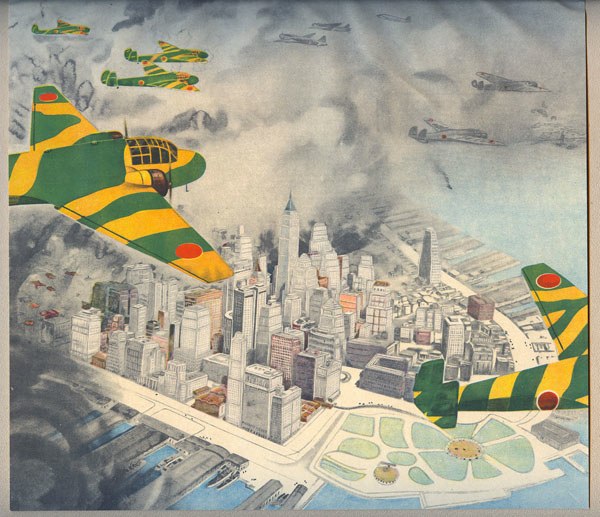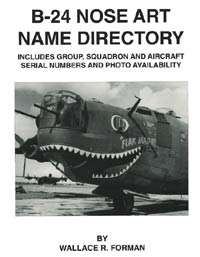|
This is a Very Rare Aviation Art
Collection
of Japanese Military Art, also known as Propaganda Art
dating from 1941 - 1943
The Portfolio is currently containing 35 of these prints for sale.
Listed Below are other art prints in this rare collection.
Translation by Nbuo Ichihara
for War in the Pacific National Historical Park
Partial
translations describing the Japanese prints depicting victories
(real and imagined) of Japanese naval and air forces.
Three digit
number indicates War in the Pacific museum website numbering; double
digit numbers indicate current set of prints.
(01) WAPA203
Junichi Goju
A Heavy Attack Against an Enemy Task Force in the East Offing of New
Guinea on February 21, 1942
(02) WAPA210
Ishikawa
The Naval Battle of the Offing of Batavia (Java Sea)
The collapse of
the enemy’s allied fleet in the area of the Java Sea on March 1,
1942…the scene of the last moment of the U.S. cruiser Houston.
(03)
WAPA202
Borneo Campaign: Tarakan Island January 11, 1942
Minoru Kawabata
(04) WAPA205
Elizo Okuse
The Naval Battle of the Java Sea, February 27, 1942
Our torpedo boat
flotilla begins firing at the enemies allied fleet. (text mentions
Dutch, British, Australia, and U.S. forces, including naming the
USS Houston)
(05) WAPA214
Tanabe
A Heavy Attack on Tarakan Island of Indonesia, January 12, 1942
Mine sweepers
attacking an enemy’s fortress.
(06) WAPA208
Kei Sato
The Air Raid on Clark Field, December 8, 1941
(07) WAPA229
Hakutei Ishii
A Medium Bomber type 96 2EB Nell Mk2 being [made’] Ready to Fly
(08) WAPA226
Matsuzoe
Triumphal Song of Lombok Channel, February 19, 1942
Our destroyers firing at Dutch cruisers.
(09) WAPA218
Kobayashi
The
Air Base of Celebes
(10) WAPA204
Kohei Ezaku, painter dispatched from Navy of Japan
The Capture of Guam Island, December 10, 1941
The morning of
December 10, 1941, Imperial troops carried out the landing on Guam
in the face of the enemy and soon overran the enemy’s garrison. By
December 12, we had finished mopping up and completely captured the
island.
Guam was
attacked before being fortified. If fortifications had been
completed, it would have been impregnable.
This picture
shows the scene of a naval brigade landing on a northern beach of
Guam and advancing.
(11) WAPA232
Kokan Kojo: a compilation committee
Gaining Ascendancy over New York
If divine eagles
(Japanese airplanes) flap the wings, skyscrapers, palatial buildings
and the like would break to fragments in an instant.
Although
American sings loudly the freedom and the humanity, he do act with
an atrocity like a beast. Material civilization as a [dummy] shall
be punished by heaven in the end.
(12) WAPA209
Misahi Mikuni
The Naval Battle of the Offing of Bali Island on February 20, 1942
Plucky fight of our destroyers fleet firing against the enemy’s
allied fleet.
(13) WAPA221
Shigenobu Ishikawa
An Air Battle on the Offing of Lae
If you fire away
all y our shot, crash yourself against an enemy. Zero fighter
dashing himself against B-26.
(14) WAPA222
Tanabe
An Air Battle in the sky of Balikpapan, the Center of Oil
Manufacture of Borneo on January 24, 1942
(15) WAPA213
Yasushi Matsuzaka, painter dispatched from Navy of Japan
The Capture of Wake, December 23, 1941
At midnight on
December 22 in 1941, our naval brigade dared to land in the face of
the enemy. In the gray morning on the twenty-third, we carried an
enemy fortress and disarmed surrenderers. At half past ten o’clock,
when the enemy’s general hung out a white flag and cried out “Stop
Fire,” the island was completely captured.
The picture
shows the scene of enemy’s surrender.
(16) WAPA225
Matsunosuke Kojima
Refloatation and Refit Work of an Enemy Destroyer in a Dock of Java
after Sweeping East Indies of the Enemy’s Forces
(17) WAPA224
Matsujiro Murakami
Searching for the Enemy on the Sea in a Squall Around Trincomalee of
Ceylon Island where the British Navy has a Base for the Indian Ocean
(18) WAPA216
Tokushiro Kobayakawa
Our Fleet Advancing into the Military Port of Singapore in February
1942
(19) WAPA200
Pearl Harbor on December 8
Tsuguji Fujita, painter dispatched by the Navy of Japan
In the grey of
the morning on December 8, 1941 (Showa 16), the Japanese Imperial
Navy dared the great attack on Pearl Harbor Navy Base with a
do-or-die spirit. Then we sank five battlewagon, two light cruisers
and one tanker, greatly damaged three battlewagon, two light
cruisers and two destroyers, half damaged one battlewagon and four
second class cruisers, destroyed more than four hundred sixty planes
and the Air Force of the Hawaii district.
At this naval
battle our special attack unit organized of special purpose midget
submarines terrorized the enemy’s fleet, dashing into heavily
guarded Pearl Harbor and attacking by storm the main forces at the
same time as the vigorous attack of our air corps and carrying out a
night attack by themselves.
The picture
portrays the complete view of Ford Island in Pearl Harbor and the
enemy’s fleet and the armaments of the enemy being consigned to the
grave around the island.
(20) WAPA215
Tokushiro Kobayakawa
Our Destroyer Attacking an Enemy’s Heavy Cruiser Houston at
the Offing of Batavia on March 1, 1942
Our destroyer
launches a torpedo, braving a fierce fire from Houston and
closing [on] it.
(21) WAPA233
Yoshihiku Matsumi
Anti Aircraft Night Fire
(22) WAPA217
Takashi
Naval Parachute Troop Rushing into the Enemy Camp
January 11, 1942, the capture of Manado of Celebes Island
(23) WAPA206
Yazawa
Sea-Cleaning Operations in Singapore Military Port Just after the
Capture in February 1942
(24) WAPA231
Tomoharu Mikami, a member of the Art Association
The Landing upon the Aleutians (Attu, Kiska) June 7-8, 1942
Imperial Navy
Troops made a surprise attack on and captured Attu and Kiska at the
western extremity of the Aleutians, and flew a sun flag over
American territory.
One year after
that, in May of 1943, an American large troop attacked Attu with
many ships and mechanized units. Our garrison counter-attacked hard
against the enemy that was superior to us in numbers. Then at last
they occupied the island and our Yamazaki troop died but never
surrender.
The picture
shows brave warriors of our naval brigade landing upon the American
territory making a naval ensign shine.
(25) WAPA212
Toichiro Fujimoto
Submarine Torpedo Attack against U.S. carrier at Sunset on January
12, 1942 on the Western Sea of Hawaii
A dramatic
moment of torpedo hits in a carrier (Lexington type 33000 tons)
(26) WAPA223
Shigenobu Ishikawa
Night Operations of the Battle of Savo Island, August 8, 1942
Burning first-class cruisers of enemy’s fleet suffer from our
shelling.
(27) WAPA219
Yasushi Matsuzoe
Naval Battle off the Coast of Rennell Island on January 30, 1942
Commander’s plane crashes against the enemy’s second ship.
(28) WAPA228
(artist name not translated)
The Capture of Celebes, January 11, 1942
(29) WAPA227
Kobayashi
Naval Bombing Mission
(30) No WAPA print
Ships Entering Harbor
(31) WAPA211
Mitsuwa
An Attack on Covite Military Port on December 10, 1941
(32) WAPA220
Matsunosuke Kojima
Our Fleet Gains Ascendancy Over the Southern Sea
The brave figure of our fleet sallying forth. (undated)
(33) WAPA207
Ichiro Arioka
The Naval Battle in the Offing of Java on February 4, 1942
Imperial Naval
force attacking a U.S. – Dutch combined fleet.
(34) WAPA201
Battle of the Malay Sea, December 10, 1941
Kenichi Nakamura
(names of the
ships H.M.S. Repulse and H.M.S. Prince of Wales appear in the text)
(35) WAPA230
Kubota
To Seek for the Enemy
|





